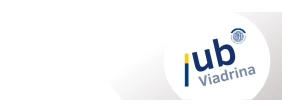Sarah Green - Digital Borders and the Nonhuman
-
2 views
-
0 likes
-
0 favorites
-

B/Orders
In Motion
- 54 Medien
- hochgeladen 8. September 2021
"Digital Borders and the Nonhuman: on the surveillance of animal movements and zoonotic diseases across the Mediterranean"
OPENING LECTURE 3rd Summer School Viadrina Center B/ORDERS IN MOTION
Lecturer: Prof. Sarah Green (Professor of Social and Cultural Anthropology at University of Helsinki)
Sarah Green is Professor of Social and Cultural Anthropology at the University of Helsinki. She has carried out fieldwork on the Greek-Albanian border, in southern Greece, in London and in Manchester, and is currently the leader of a five-year research project called Crosslocations: rethinking relative location in the Mediterranean (see https://www.helsinki.fi/en/researchgroups/crosslocations ). Her work for that project is the basis of this presentation. Across her career, she has focused on issues relating to anthropology of space, place, borders and location, whether the theme of the research was the politics of gender and sexuality (Urban Amazons, St Martins Press 1997), border politics (Notes from the Balkans, 2005) or a variety of other topics, such as the introduction of the internet to Manchester, the understanding of money and trade in the Aegean region, or, most recently, the spatial politics of the movement of animals and attempts to manage the spread of zoonotic disease across the Mediterranean region.
In 1920, a shipment of live cattle from India destined for Brazil stopped off in Antwerp, Belgium. The cattle were infected with rinderpest, and the shipment triggered a transnational outbreak of the disease. Four years later in 1924, an international organization, the Office International des Epizooties (OIE) was founded to coordinate international responses to the outbreak of animal-borne diseases. It is now called the World Organization for Animal Health (but still referred to as the OIE), and its main job is to carry out surveillance of animal movements across the planet and closely monitor the spread of their diseases. Nowadays, it is digitally tracking wild animals and fish as well as livestock. For comparison, the World Health Organization (WHO), which oversees transnational health issues affecting humans, was founded 24 years after the OIE, in 1948. The OIE developed out of the intensification of animal transport across the planet and the perhaps inevitable increase in the speed and extent of the spread of animal-borne diseases. These days, there are sophisticated digital surveillance systems that assist with the tracking, including the World Animal Health Information System (WAHIS), which is coordinated with the Global Early Warning System (GLEWS) and a variety of other digital surveillance systems whose job it is to track the movement of animals and their diseases across borders. Drawing on visits to different parts of the Mediterranean region to meet livestock traders, farmers, pastoralists, veterinarians, zoologists and other animal researchers, as well as local representatives of the OIE, the lecture describes how the movement of animals across the Mediterranean involve different kinds of borders from the ones crossed by humans. The lecture considers the surveillance systems being used in the contemporary period and historically to conduct surveillance of the nonhuman, focusing particularly on the Mediterranean region. By outlining the different kinds of logic used to track and control the movement of animals, the lecture aims to highlight the relations and separations between contemporary border controls aiming to control people, and those aiming to control animals and zoonotic disease.














